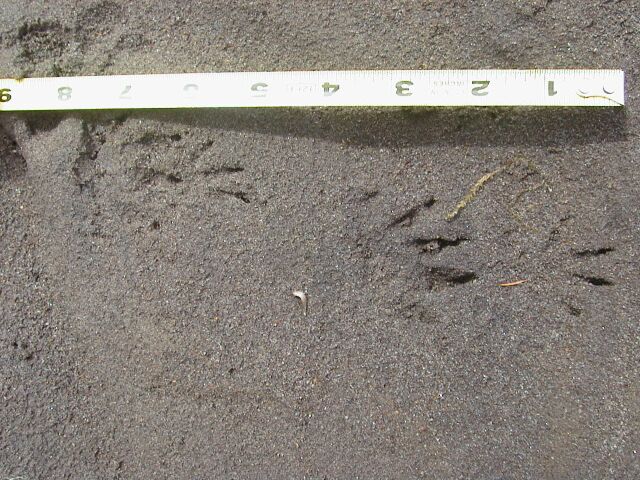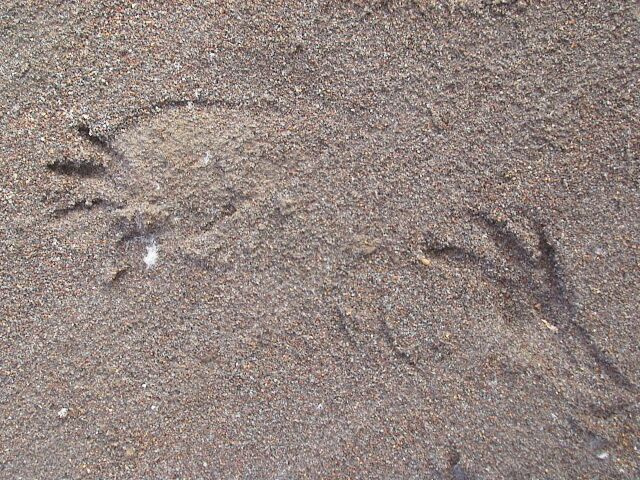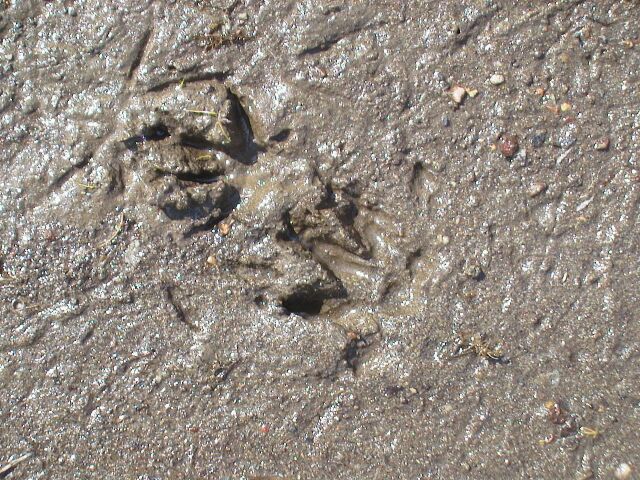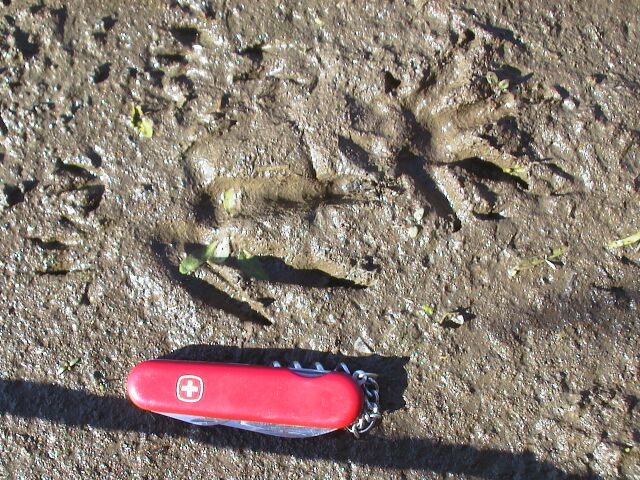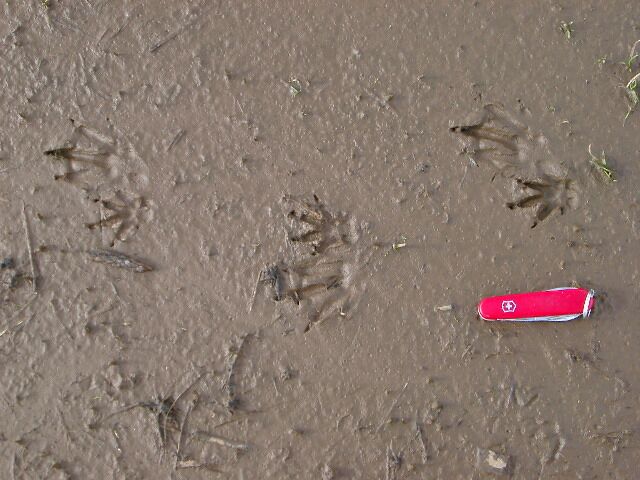
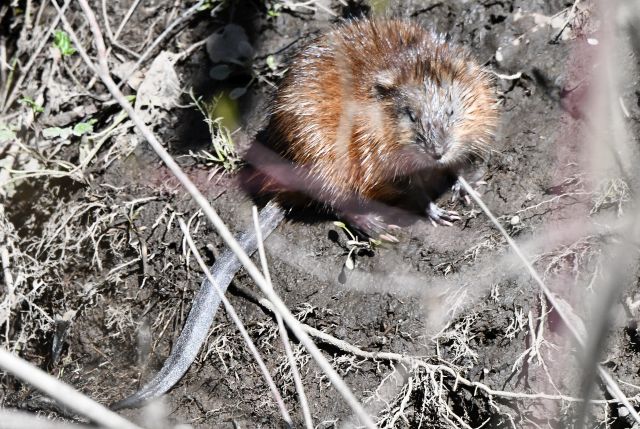
The muskrat (Ondatra zibethicus) seems to prefer cattail marshes over other habitats though I have seen them elsewhere, including fairly swift rivers. Their feet are rather distinctive. Tracks are usually found in sand or mud along streams and marshes.
Look close and you will see a muskrat munching on cattail reeds with little regard for me as
I watched nearby.

Following tracks running into the bank I discovered this burrow.
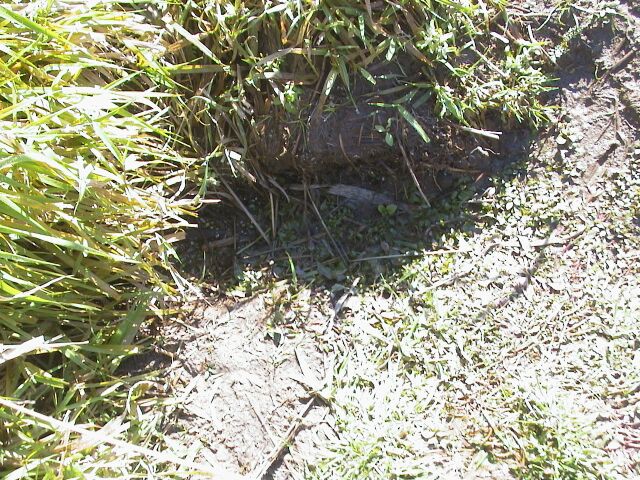
Like other rodents, the muskrat has a 4f5H configuration. The hind feet, in particular, are quite
distinctive with a fringe of hairs and a very asymetrical pattern. The long tail is somewhat flattened and can be seen snaking back and forth while swimming.
Like the beaver, the pelt is rich and soft. This muskrat climbed out of the Sandy River in Oxbow Park. Another track from a different section of the Sandy River. Tracks at Slough Creek in Yellowstone National Park. Fernhill Wetlands, Cattail Marsh, Forest Grove, OR. Typical walking gait. Walking gait of a large muskrat with 14" stride and 7.5" straddle. Feet
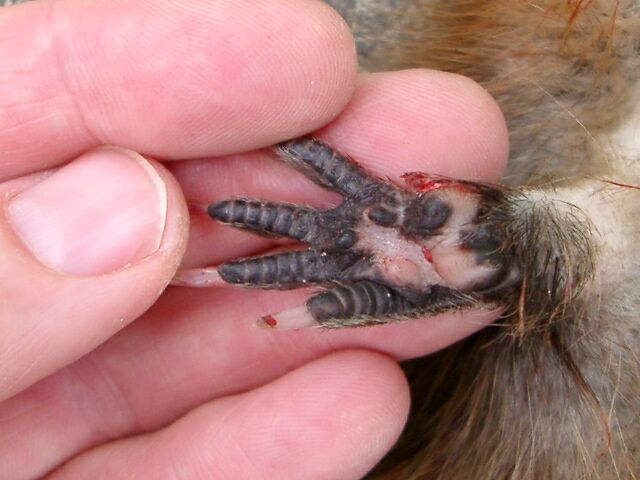


Tracks
